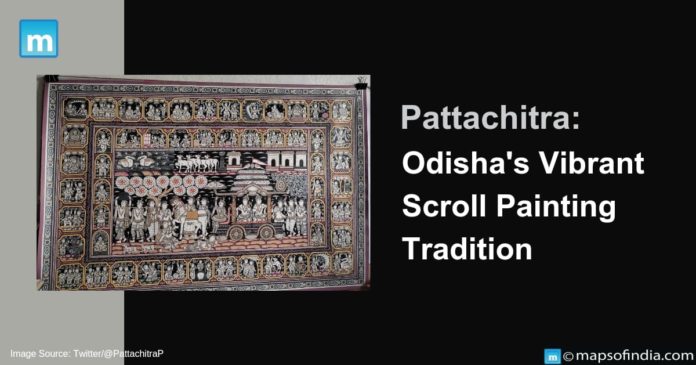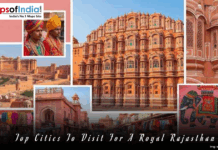Odisha, located on India’s eastern coast, is a treasure trove of cultural heritage. It is a proud state that has preserved its cultural roots, from ancient temples to rich traditions. Pattachitra, one of Odisha’s many cultural jewels, stands out as a vibrant and intricate scroll painting tradition that has enchanted art connoisseurs for centuries.
History of Scroll Painting Tradition
Pattachitra has a long history, with records indicating that this art form has been practiced for over a thousand years. The term “Pattachitra” is derived from two words: “Patta,” which means cloth or canvas, and “Chitra,” which means painting. These paintings are usually done on cloth or palm leaf, which provides a unique canvas for the artist’s expression.
Chitrakars, or Pattachitra artists, are traditionally associated with the Odisha villages of Raghurajpur, Dandasahi, and Puri. These artists are members of specific communities who have passed down the art form from generation to generation. Their mastery of the craft is often passed down through families, and the skills and techniques are closely guarded secrets. This traditional transmission mode ensures that Pattachitra’s authenticity and uniqueness are preserved.
Different styles of Pattachitra
-
Puri Pattachitra
This style of Pattachitra painting is known for its bold outlines, vibrant colors, and intricate details. Puri Pattachitra paintings typically depict scenes from the Jagannath cult, such as the Rath Yatra festival
-
Ganjam Pattachitra
This Pattachitra painting style is distinguished by its use of natural colors and its simple folk art style. Paintings by Ganjam Pattachitra typically depict scenes from Hindu mythology as well as scenes from everyday life.
-
Chitrakala Pattachitra
This style of Pattachitra painting is known for its use of geometric patterns and stylized figures. Chitrakala Pattachitra paintings typically depict scenes from the Vaishnava sect of Hinduism.
The Craftsmanship
The intricate detailing, vibrant colors, and rich symbolism of Pattachitra paintings distinguish them. These paintings are excellent examples of the blending of art and spirituality. Artists masterfully employ a limited palette of colors derived primarily from natural sources such as minerals, vegetables, and stones. These natural pigments contribute to the timeless appeal and durability of Pattachitra paintings.
The process of creating a Pattachitra is meticulous and labor-intensive. It begins with preparing the canvas, which can be either a cloth or a palm leaf. The canvas is first treated with chalk and gum to create a smooth surface. Once dry, the artist draws the initial sketch, often representing mythological or religious themes. The contours are outlined using black ink, and the intricate designs are painstakingly filled with colors, one after the other. The fine details, especially in depicting deities and intricate motifs, showcase the exceptional skills of the Chitrakars.
Cultural Significance
Pattachitra is a living repository of Odisha’s heritage, connecting spirituality, tradition, and artistic expression. These vibrant scroll paintings, which frequently depict religious and mythological themes, create a spiritual ambiance in temples and homes while providing income for Chitrakars and contributing to cultural tourism.
Conclusion
Pattachitra is more than just a form of art; it is a testament to Odisha’s deep-rooted culture and spirituality. Its intricate detailing, vibrant colors, and rich symbolism make it a treasured heirloom that reflects the state’s heritage and traditions. As this ancient art form evolves and adapts to modern tastes, it remains a bridge between tradition and innovation, ensuring its enduring presence in Odisha’s and the world’s cultural tapestry.




